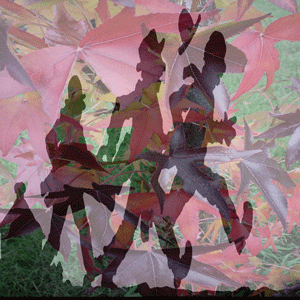 Back in the 1960s, Fourth Avenue in Vancouver was home to many hippies. They wanted to enjoy life, absorb the look and feel of things. As Thoreau said, life should be real, and you should “keep your accounts on your thumbnail.” Hippies liked beauty but didn’t want to work for luxuries; in fact, they didn’t want to work at all, and never at real jobs. Hippies might make beautiful sandals or pottery, but the point was to get by. “Time is but the stream I go a-fishing in,” wrote Thoreau. Hippies read this and wanted to see what could be caught.
Back in the 1960s, Fourth Avenue in Vancouver was home to many hippies. They wanted to enjoy life, absorb the look and feel of things. As Thoreau said, life should be real, and you should “keep your accounts on your thumbnail.” Hippies liked beauty but didn’t want to work for luxuries; in fact, they didn’t want to work at all, and never at real jobs. Hippies might make beautiful sandals or pottery, but the point was to get by. “Time is but the stream I go a-fishing in,” wrote Thoreau. Hippies read this and wanted to see what could be caught.
Not all the hippies were real hippies. Some were weekend hippies: “straight” lawyers or businessmen and their wives or girlfriends, who dressed up in beads and fringes on a Saturday and smoked a joint with some real hippies they found on a front stoop on Fourth Avenue. And some were observers, gawking at everyone through a car window, driving slowly.
These observers saw remarkable things, like the Prince. No one ever knew his real name, but he was a handsome, tall hippie with an aristocratic head, blond hair over his ears. The Prince carried a walking stick and stood conversing with a policeman who was a head shorter, straight and encased in his uniform. What was extraordinary about the scene — which many hippies, both real and weekend, glimpsed that day — was the absoluteness with which the Prince was himself and the police officer was himself. Neither made the slightest compromise, yet they stood just inches apart. The image of the Prince and the policeman stayed with people because Evan captured it in a photograph which made the front page of the first edition of the Georgia Straight.
It was the start of an era, but Evan was neither a hippie nor a straight person. He was a hardworking artist who was told by the Canada Council that photography was not art. Canada was a tucked-away place in those days, and the committees of the Canada Council had never heard of Man Ray or Henri Cartier-Bresson.
Evan rebelled against his father’s expectation that he would join his dental practice in New York. But unlike a hippie, he worked hard, running an art-framing business out of his apartment above an Asian grocery on Fourth Avenue. He knew how to make the art float inside the frame and other techniques that drew artists like Jack Wise to have their work framed by Evan. He did this work by day, and at night he composed his own photographic abstracts, finding different ways of looking at things.
Eventually Evan created a large body of work, though much of it was destroyed indirectly by the hippies and weekend hippies next door. They had taken LSD and were sitting around a portable heater which exploded. The hippies watched in delight as liquid colours consumed the walls. They didn’t realize there had been an explosion — they thought it was an hallucination. All the buildings on that block burned to the ground, though Evan pulled his life from the stream of that time.
Copyright © Leora Freedman 2022
***If you have something to say, or a story to share, our comments page is the place to leave it!
 Copyright secured by Digiprove © 2022 Leora Freedman
Copyright secured by Digiprove © 2022 Leora Freedman 
